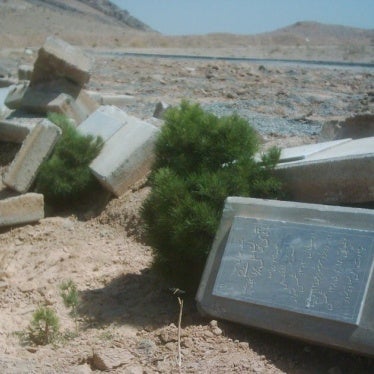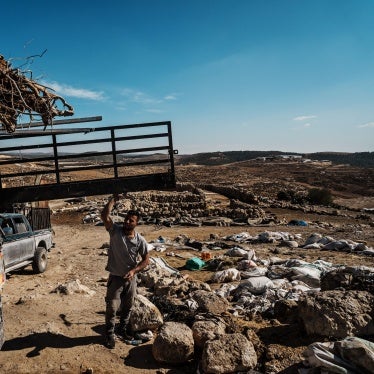A digitally dated and time-stamped blood test report of a victim treated at a Palestinian hospital that admitted wounded from the June 9 killings on a Gaza beach suggests that the attack took place during the time period of an Israeli artillery attack, Human Rights Watch said today. The Israel Defense Forces (IDF) have denied responsibility for the killings, saying that although they fired six artillery shells onto the beach between 4:32 p.m. and 4:51 p.m., the fatal incident must have occurred after that.
Human Rights Watch first challenged this conclusion, concluding that the IDF most likely caused the killings, in a press release based on an investigation by its researchers in Gaza.
Human Rights Watch researchers examined the computer-generated record from the Kamal Adwan hospital, which documents the blood test of a victim from the beach incident being taken at 5:12 p.m. on June 9. Furthermore, hand-written hospital records log patients from the incident as having been admitted starting at 5:05 p.m. If the records are accurate, based on the time needed to dispatch an ambulance and drive from the hospital to the beach and back, this suggests that the fatal explosion took place at a time when the IDF said it was firing artillery rounds. Both sets of records also directly call into question the account of the IDF that ambulances did not reach the beach until 5:15 p.m. that day.
Altering the records would require re-setting the computer’s clock and re-writing pages of the hospital’s admissions log. Human Rights Watch researchers said that the pages they saw documented patients un-related to the beach incident, followed by two pages of victims from the beach. The first of those were admitted at 5:05 p.m. The researchers saw no evidence that the times might have been altered.
Israeli military officials have also suggested the explosion, which killed seven members of the Ghalya family and wounded many others, might have been caused by a mine. But Human Rights Watch researchers also examined blood-crusted shrapnel given to them by the father of a 19-year-old male who suffered abdominal wounds in the beach explosion. They determined that the shrapnel is a piece of fuse from an artillery shell.
“The likelihood that the Ghalya family was killed by an explosive other than one of the shells fired by the IDF is remote,” said Marc Garlasco, senior military analyst at Human Rights Watch. “This new evidence highlights the urgent need for Israel to permit an independent, transparent investigation into the beach killings.”
Human Rights Watch received a fax today from the office of Palestinian Authority President, Mahmoud Abbas, saying that the president’s office, which is holding much of the shrapnel removed from the blast victims, would cooperate and share evidence with an independent inquiry team.





